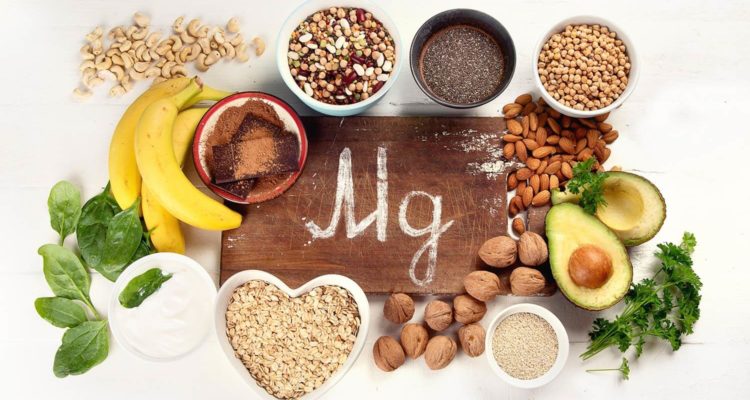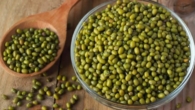
10 foods that provide magnesium
0
Be careful with supplements.
Why you need magnesium
It is one of the most important minerals that your body cannot live without. Literally.
Magnesium is a key participant in more than 300 chemical reactions, thanks to which metabolism takes place. It ensures mobility and proper muscle function. Thanks to it, the nervous system correctly transmits signals from the brain to various organs and tissues and back. Inside the brain, however, too.
Magnesium helps maintain a stable heart rhythm and balanced blood sugar levels. Also, the mineral takes a direct part in the synthesis of proteins and DNA, that is, it helps the body recover, maintain health and youth.
Where does magnesium come from and how much is needed
Despite this high importance, our body does not know how to produce magnesium on its own – we get it from food. To stay healthy, women 19 years of age and older need 310 mg of magnesium per day (pregnant women – up to 350 mg), men under 30 years – 400 mg, over 30 years – 420 mg.
An alternative option is to get magnesium from multivitamins and supplements. However, in this case there is a risk of overdoing it. Excess magnesium manifests itself as nausea, stomach cramps, diarrhea, and in some cases can lead to cardiac arrhythmia and even cardiac arrest.
Therefore, in no case should you take magnesium supplements if you have:
p>
- heart problems;
- kidney failure;
- bowel obstruction;
- myasthenia.
< p>Normal food is a much safer way to get your daily dose of magnesium. Even if you eat too many foods that contain this mineral, the kidneys will excrete the excess through urine. And you will get nothing but benefits.
Which foods contain the most magnesium
1. Dark chocolate
One 100-gram bar contains up to 200 mg of magnesium — that is, at least half of the recommended daily dose.
Chocolate is also rich in iron, copper, manganese, and antioxidants. — substances that protect body cells from the destructive effects of free radicals. To get the most out of chocolate, choose a product that contains at least 70% cocoa.
2. Avocado
58 mg of magnesium per one medium-sized fruit (or about 30 mg per 100 g) is a very good result. In addition, avocados are rich in potassium, B vitamins, vitamin K, and monounsaturated fats, which are extremely beneficial for the cardiovascular system.
A separate topic is fiber. Avocado is literally overflowing with it: 13 of the 17 g of carbohydrates that fall on the average fruit are good ones. Fiber improves digestion, helps reduce blood sugar levels and allows you to maintain a feeling of satiety for a long time after eating. All this makes avocado not only useful, but also a dietary product that helps control weight.
3. Nuts
Magnesium is found in almost all types of nuts, but almonds, cashews and Brazil nuts are especially rich in it. For example, 100 g of cashews will provide your body with almost 300 mg of the mineral.
4. Beans
Lentils, beans, chickpeas, peas, soybeans – choose any of these products: they all contain at least 30 mg of magnesium per 100 g. Black beans are the champion, 100 g of which contains 70 mg of the vital mineral.
5. Tofu
6. Quinoa
The popular cereal contains more protein than any other grain. Quinoa also has a lot of iron, folic acid (vitamin B9), copper, manganese… and, of course, magnesium: 64 mg per 100-gram portion of ready-made porridge.
7. Fatty fish
Salmon, halibut, Atlantic mackerel, pollock are especially rich in magnesium. For example, a small 100-gram piece of pollock fillet contains about 30 mg of the important mineral.
The same piece will provide you with 20 g of high-quality protein, as well as decent doses of potassium, selenium, B vitamins and essential omega-3 fatty acids. 3.
8. Spinach
88 mg of magnesium for every 100 g of raw or cooked (for example as a pie filling) spinach. Somewhat less, but also a noticeable amount of the mineral is contained in other leafy greens – cabbage, turnip greens and mustard.
9. Whole-grain cereals, bran, bread made from whole-grain flour
Wheat, oats, barley, as well as pseudo-grain buckwheat are also rich in magnesium. For example, in buckwheat it is more than 230 mg per 100 g. And in whole grain flour, it is about 140 mg per the same weight.
10. Bananas
One large banana weighing just over 200 g will provide your body with approximately 60 mg of magnesium. This makes bananas champions among fruits in terms of the content of this mineral.









Leave a Reply